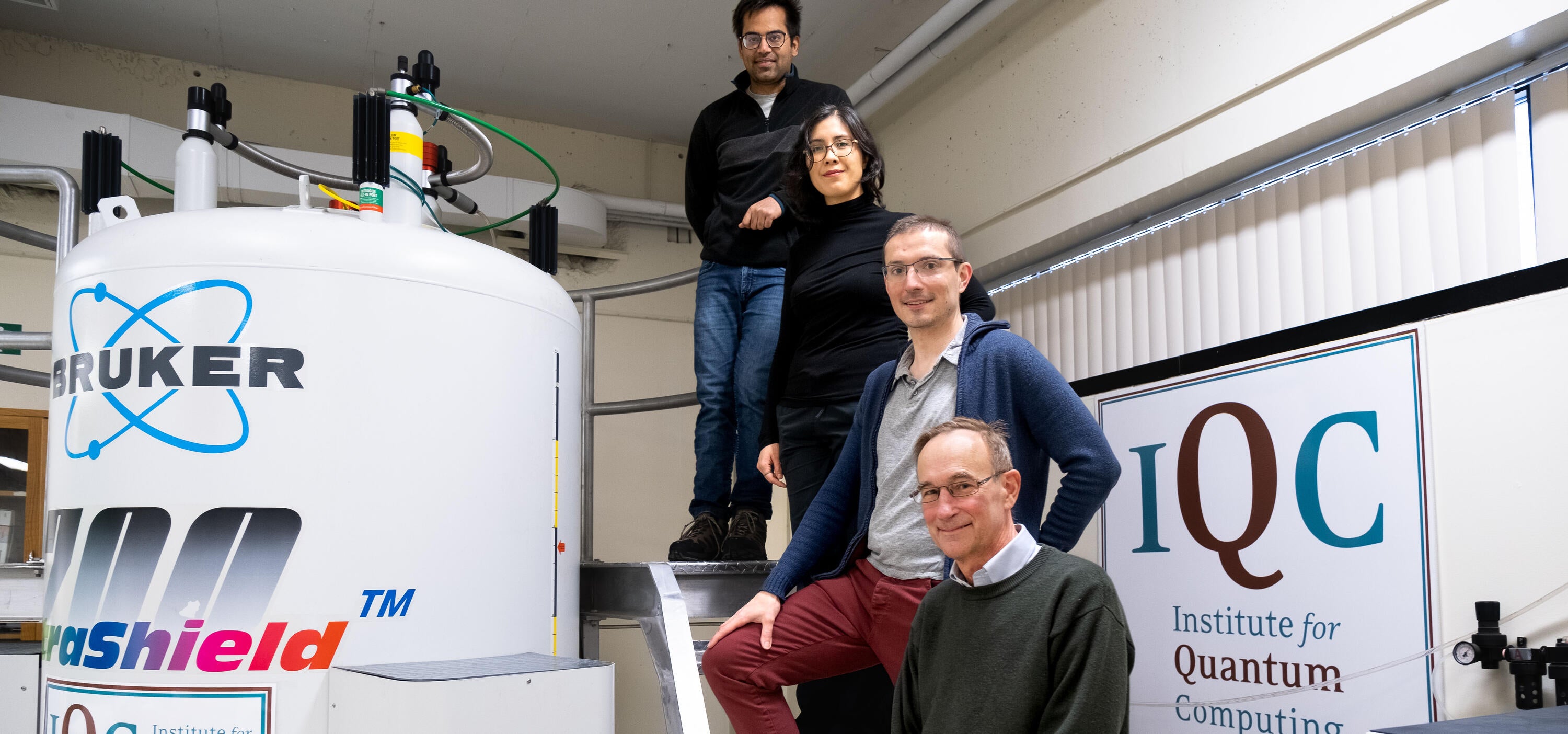
Energy is present everywhere in the universe, from the tiniest particles to the vastness of space. According to quantum mechanics, vacuum states like outer space are not actually empty, because when observed at microscopic scales, there are spontaneous energy fluctuations.
These fluctuations can be loosely interpreted as a sea of particles ‘popping in and out of existence’ for short times, and results in regions of positive and negative energy densities. Overall, these fluctuations keep the vacuum in its lowest possible energy state, known as the zero-point energy.
However, it has been theorized that under very specific conditions, quantum information processing and quantum thermodynamics tools might be useful for localized energy extraction from the zero-point energy of a quantum vacuum. Researchers at the Institute for Quantum Computing (IQC) have implemented the first experiment in which quantum entanglement is used as a resource to activate the vacuum zero-point energy.
The team included Dr. Raymond Laflamme, professor in the Department of Physics and Astronomy, and Dr. Eduardo Martín-Martínez, professor in the Department of Applied Math, as well as Dr. Nayeli Rodríguez-Briones and Dr. Hemant Katiyar, both recent Waterloo physics graduates, now working at the University of California, Berkeley and IonQ Canada, respectively. Together, they experimentally tested the impact of entanglement between particles to extract energy from a vacuum state.
The concept of local extraction of zero-point energy was first proposed by Masahiro Hotta in 2008, who conceived the protocols named quantum energy teleportation. In this protocol, energy is not being moved or transported between the two locations. Instead, energy is spent in one location of the system to gather information. This information is then shared via entanglement and used at the second location to extract energy. This protocol had remained theoretical until now, as the team of IQC researchers has published the first experiment to test quantum energy teleportation.
“When you start focusing on local sections of the vacuum, you’re going to see fluctuations of energy. Sometimes, you’re going to have fluctuations that give you energy, and sometimes they take energy, but on average, you’re always going to be inputting energy into the system,” says Martín-Martínez. “But when the vacuum has entanglement — which is the case for most systems in the world — you can spend energy to get information about one local state. Then, you can send that information to somebody with access to a different part of the vacuum. From there, they can use that information to catch the right fluctuation in their local state to extract energy.”
In this experiment, the researchers used nuclear magnetic resonance (NMR) to simulate the quantum system of a vacuum using three carbon atoms in the molecule transcrotonic acid. The carbon nuclei each have an inherent spin state of either up or down, which can be harnessed as a qubit in NMR experiments. Two carbon nuclei (A and B) act as the entangled locations, and the third carbon nucleus acts as an auxiliary qubit. To perform the experiment, the auxiliary qubit was used to measure qubit A without transferring any energy between qubits A and B. The information gained from this measurement was then used to extract energy from qubit B without transferring energy between the qubits. This process demonstrated the feasibility of extracting energy in a strong local passive state using the quantum energy teleportation protocol.
“Our work gives insight into the interplay between entanglement and locality, and the effect it has on the energy flows in the system,” says Rodríguez-Briones. “Our research connects concepts from several fields, such as quantum information and quantum thermodynamics, which could potentially be useful for other theoretical physics problems and applications.”
While this experiment is the first step, this theory has implications in a wide range of quantum applications and our understanding of quantum theory. For example, understanding quantum energy teleportation protocols may give insights into the black hole information paradox and may lead to applications using quantum thermodynamics to improve quantum devices.
“By doing an experiment, even if it's a very simple first step in using theoretical ideas and concepts from quantum theory, we can prove that the world really behaves in alignment with the theoretical principles of quantum mechanics,” says Laflamme. “Our experiment shows that extracting energy from an entangled ground state is possible. It’s a small step, but it opens the door for many other things – quantum information science is becoming quantum information technologies.”
The article, Experimental activation of strong local passive states with quantum information, was published in Physical Review Letters on March 13, 2023.